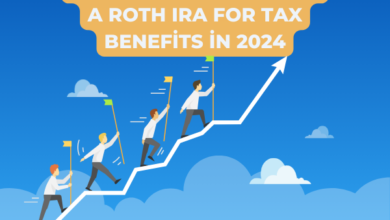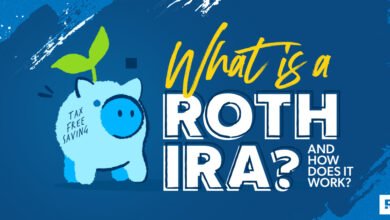7 Steps to Retire Early at 50

7 Steps to Retire Early at 50
Entering the golden years of life earlier than expected is a dream many of us hold dear. In my comprehensive guide, 7 Steps to Retire Early at 50, I detail the actionable steps that can turn this dream into a reality. Through careful early retirement planning, you’ll learn how to retire at 50 by assessing your current financial standing, setting clear and achievable goals, and implementing retire early financial strategies that work. Whether it’s creating a robust savings plan, investing sensibly, or diversifying income streams, each step is crucial for anyone aiming for financial planning for early retirement at 50. Plus, I’ll guide you on managing expenses and handling healthcare needs to ensure a smooth transition. So, if you aspire to understand the steps to achieve early retirement at 50, keep reading; this guide is tailored just for you.
7 Steps to Retire Early at 50 Assess Your Current Financial Situation
Embarking on the journey to early retirement requires a thorough understanding of your current financial landscape. To retire early at 50, the first crucial step is to assess your current financial situation. This means taking an honest, detailed look at your income, savings, investments, debt, and expenses.
Key Areas to Assess:
- Income: Evaluate all sources of income, including your salary, bonuses, side gigs, and passive income. Knowing how much you earn monthly and yearly will help you plan effectively.
- Savings and Investments: Calculate the total amount of money you have saved, including retirement accounts (401(k), IRAs), savings accounts, and stock portfolios. Differentiating between liquid assets and long-term investments is essential.
- Debt: Make a list of all liabilities, including credit card debt, student loans, mortgages, and any other obligations. High-interest debt is particularly crucial as it can seriously impact your savings.
- Expenses: Track your monthly and annual expenses meticulously. This includes essentials like housing, food, and utilities, as well as discretionary spending on entertainment, travel, and hobbies.
Financial Status Summary Table
| Financial Component | Description | Amount |
|---|---|---|
| Income | Salary, bonuses, side gigs, passive income | $__________ |
| Savings & Investments | 401(k), IRAs, savings accounts, stocks | $__________ |
| Debt | Credit card debt, loans, mortgage | $__________ |
| Monthly Expenses | Housing, food, utilities, entertainment | $__________ |
7 Steps to Retire Early at 50 Steps to Assess:
- Calculate Your Net Worth: Subtract your total liabilities from your total assets to find your net worth. This will give you a clear picture of your financial standing.
- Review Financial Statements: Regularly go through bank statements, investment reports, and credit card bills to keep your financial health in check.
- Budget Analysis: Create a budget to monitor and manage your income and expenses. Use budgeting tools or apps to simplify the process.
By assessing your current financial situation, you lay the groundwork for effective early retirement planning. This step ensures that you have a realistic view of where you stand financially and what adjustments may be required for the steps to achieve early retirement at 50. Once you have this clear picture, you can move forward with confidence in your plan to retire early at 50.

Photo by Nick Fewings on Unsplash
Set Clear Early Retirement Goals
Setting clear early retirement goals is a crucial step when aiming for how to retire at 50. Without well-defined objectives, your path to early retirement might be unclear. Here’s how to set effective goals for early retirement planning.
1. Define Your Retirement Lifestyle
Begin by imagining your ideal retirement lifestyle. Do you plan to travel extensively, pursue hobbies, or embark on new business ventures? Clearly outlining how you wish to spend your time post-retirement helps to determine the financial resources you will need.
2. Establish a Retirement Budget
Create a detailed budget based on your envisioned lifestyle. This includes:
- Daily living expenses: Housing, food, utilities
- Healthcare costs: Insurance premiums, out-of-pocket expenses
- Leisure activities: Travel, hobbies, entertainment
- Unexpected expenses: Home repairs, emergencies
3. Determine Your Financial Needs
Using your retirement budget, calculate the total amount of savings required to sustain your lifestyle. Tools like retirement calculators can be very helpful here. They allow you to input various factors and provide an estimate aligned with your objectives.
4. Set a Retirement Date
Choosing a specific retirement date gives you a clear timeline for your financial planning. This date should be realistic and based on your savings, investments, and other retire early financial strategies.
Example Table: Retirement Needs Projection
| Expense Category | Monthly Cost | Annual Cost |
|---|---|---|
| Housing | $1,500 | $18,000 |
| Utilities | $300 | $3,600 |
| Groceries | $400 | $4,800 |
| Healthcare | $500 | $6,000 |
| Leisure & Travel | $600 | $7,200 |
| Misc. and Emergencies | $200 | $2,400 |
| Total | $3,500 | $42,000 |
Break down expenses as shown above to understand how much you need monthly and annually.
5. Monitor and Adjust Your Goals
Regularly review your goals to adjust for changes in income, expenses, or unexpected life events. This flexibility ensures that your plan remains aligned with your desired retirement date and lifestyle.
By following these steps to achieve early retirement at 50, you create a clear roadmap for reaching your goal. Successful financial planning for early retirement at 50 requires defined objectives and disciplined execution. Start setting your goals today, and you’ll be well on your way to a secure and fulfilling early retirement.
Create a Robust Savings Plan
When it comes to how to retire at 50, one of the most vital steps is creating a robust savings plan. Developing a solid strategy for saving money will lay the foundation for a successful early retirement.
Setting Savings Goals
Before diving into the saving process, it’s crucial to establish clear, achievable goals. Start by determining how much you need to retire comfortably. This requires an understanding of your desired lifestyle in retirement. Will you travel frequently, or do you plan to settle somewhere with a lower cost of living? These choices significantly impact your financial requirements.
7 Steps to Retire Early at 50 – Automate Your Savings
One effective tactic in financial planning for early retirement at 50 is automating your savings. Set up automatic transfers from your paycheck or checking account into a dedicated retirement savings account. This ensures you’re consistently setting aside funds. By treating your savings like any other non-negotiable bill, you’re more likely to meet your goals.
- Set up direct deposit: Allocate a portion of your salary to go directly into your retirement account.
- Schedule monthly transfers: Move a fixed amount from your checking to your savings account each month.
Maximize Tax-Advantaged Accounts
Utilize tax-advantaged accounts such as IRAs and 401(k)s to maximize your savings efficiently. These accounts offer tax benefits that can contribute significantly to your nest egg.
| Account Type | Contribution Limit (2023) | Tax Advantages |
|---|---|---|
| IRA | $6,500 | Tax-deferred growth, tax-free withdrawals (Roth IRA) |
| 401(k) | $22,500 | Pre-tax contributions, tax-deferred growth, potential employer match |
7 Steps to Retire Early at 50 Emergency Fund and Liquid Savings
In addition to long-term savings, establish an emergency fund. Aim for three to six months’ worth of living expenses in a liquid, easily accessible account. This will protect you from having to dip into retirement savings for unexpected expenses.
7 Steps to Retire Early at 50 Regularly Review and Adjust
Finally, regularly review your savings plan to ensure it’s on track. Life circumstances and financial markets change, so your plan may need adjustments. By staying proactive, you can make the necessary tweaks to stay aligned with your early retirement planning goals.
By following these steps, you’ll be well on your way to achieving the steps to achieve early retirement at 50. Planning, consistency, and regular adjustments are the keys to a robust savings plan that supports your dreams of early retirement.
Invest Wisely to Grow Your Wealth
When contemplating how to retire early at 50, it’s crucial to ensure that your investments are working as hard as you do. Robust financial strategies can significantly accelerate your journey towards early retirement. Here’s how to make your investments count:
Diversify Your Investment Portfolio
A well-diversified portfolio is fundamental for minimizing risks while maximizing returns. Spread your investments across different asset classes such as:
- Stocks: High return potential but volatile.
- Bonds: Stable and lower-risk investments.
- Real Estate: Offers passive income and capital appreciation.
- Mutual Funds: Professional management of pooled funds.
- Index Funds and ETFs: Low-cost and typically track market indexes.
Regularly Review and Rebalance Your Portfolio
Your financial goals and market conditions will evolve. Therefore, it’s essential to regularly review and rebalance your portfolio. This ensures that your asset allocation aligns with your risk tolerance and retirement goals.
Prioritize Tax-Advantaged Accounts
Contributing to tax-advantaged accounts can be a key strategy in your early retirement planning:
- 401(k) and IRA: These accounts offer tax deductions for contributions.
- Roth IRA: Provides tax-free withdrawals in retirement, ideal for early retirees.
- Health Savings Account (HSA): Triple tax benefits—contributions, growth, and withdrawals (for qualified medical expenses) are tax-free.
7 Steps to Retire Early at 50 Leverage Compounding Interest
Starting early allows you to harness the power of compounding interest. The earlier you invest, the more time your money has to grow. Reinvestment of dividends and interest can exponentially increase your wealth over time.
Investment Strategy Comparison Table
| Investment Type | Risk Level | Potential Return | Liquidity/Accessibility |
|---|---|---|---|
| Stocks | High | High | High |
| Bonds | Low-Medium | Modest | High |
| Real Estate | Medium | Significant | Low |
| Mutual Funds | Medium | Varied | High |
| Index Funds/ETFs | Medium | Modest to High | High |
Seek Professional Advice
Navigating the financial markets can be complex. Consulting with a financial advisor can provide tailored investment strategies to align with your specific goals of early retirement.
By strategically choosing where and how to invest, you can significantly enhance your financial planning for early retirement at 50. Remember, the right investments can be one of your most powerful tools in achieving your dream to retire early at 50.
Reduce Debt and Manage Expenses
One critical step in 7 Steps to Retire Early at 50 is learning how to reduce debt and manage expenses effectively. Eliminating financial burdens and controlling outflows can significantly improve your ability to save and invest for early retirement. Here is a structured approach to early retirement planning with a focus on debt reduction and expense management.
7 Steps to Retire Early at 50 Assess and Prioritize Debt
Begin by conducting a thorough assessment of your current debts. List them by interest rate, balance, and type. This helps in identifying which debts are more costly and need immediate attention.
- High-Interest Debts: Focus on paying off high-interest debts first, such as credit card balances.
- Low-Interest Debts: Handle low-interest debts, like mortgages, after high-interest debts are paid off.
- Consolidation Options: Consider consolidating multiple debts into a single, more manageable payment.
Create a Frugal Budget
A well-planned budget is vital. Analyze your spending habits and identify areas to cut back.
- Track Spending: Use apps or spreadsheets to monitor day-to-day expenses.
- Eliminate Non-Essentials: Cut unnecessary expenses like subscription services or dine-outs.
- Set Spending Limits: Establish clear limits on discretionary spending categories.
| Expense Category | Current Spending | Goal Spending |
|---|---|---|
| Eating Out | $300/month | $100/month |
| Entertainment | $150/month | $50/month |
| Utilities | $200/month | $150/month |
Maintain Discipline
Stay disciplined in your efforts to manage expenses. Consistency over time yields significant savings which are pivotal for steps to achieve early retirement at 50.
- Automate Savings: Set up automatic transfers to your savings account.
- Periodic Reviews: Regularly review your budget and adjust as needed.
- Accountability Partner: Share your goals with a friend or financial coach for encouragement and guidance.
Mastering how to reduce debt and manage expenses aligns perfectly with how to retire early at 50. When your expenses are under control, you’ll be in a stronger financial position to focus on investing wisely and diversifying your income streams.
Diversify Your Income Streams
One of the most crucial steps on the path to retiring early is ensuring you have diversified income streams. In my journey towards early retirement planning, this strategy has played an instrumental role in building a resilient financial portfolio. Here’s why diversifying your income is essential and how you can effectively do it.
Why Diversify Income Streams?
Relying on a single income source can be risky, especially if you aspire to retire early at 50. Economic downturns, job losses, or industry shifts can significantly impact your primary income. By diversifying, you mitigate these risks and build multiple revenue streams that bolster your financial security. Let’s explore some avenues to create diversity in your earnings.
7 Steps to Retire Early at 50 Ways to Diversify Your Income
Here are some practical strategies to ensure you have multiple revenue sources before hitting that retirement milestone:
- Investment Portfolios
- Stock Market: Investing in stocks can yield substantial returns over time.
- Bonds: These offer stable, albeit lower, returns and add balance to your portfolio.
- Real Estate
- Rental Properties: Owning rental units or vacation properties can generate steady monthly income.
- Real Estate Investment Trusts (REITs): REITs allow you to invest in real estate without the hassle of property management.
- Side Businesses
- Freelancing/Consulting: Use your professional skills to take on part-time projects.
- Online Businesses: E-commerce, affiliate marketing, or content creation can provide additional revenue.
- Passive Income Sources
- Dividends: Invest in dividend-paying stocks to earn ongoing passive income.
- Royalties: If you have creative works (books, music), royalties can provide a steady income stream.
Comparison Table: Active vs. Passive Income
| Income Type | Examples | Effort Level | Risk | Potential Return |
|---|---|---|---|---|
| Active Income | Freelancing, Consulting | High | Variable | High |
| Passive Income | Dividends, Royalties, REITs | Low | Lower | Moderate to High |
By effectively diversifying your income, you align yourself with the steps to achieve early retirement at 50. This strategic planning not only enhances your financial security but also gives you the freedom to weather economic uncertainties with confidence.
Embracing multiple income streams is more than just a fallback plan; it’s a proactive approach to ensuring a prosperous and secure early retirement. Remember, the key to financial planning for early retirement at 50 is to build a robust and resilient financial framework that can stand the test of time.

Photo by Kendall Scott on Unsplash
Plan for Healthcare and Insurance Needs
When it comes to 7 Steps to Retire Early at 50, planning for healthcare and insurance needs is an essential yet often overlooked step. It’s easy to assume that Medicare will cover all expenses, but the reality is more complex, especially if you retire before you’re eligible for Medicare.
Key Areas to Consider
1. Health Insurance Options:
- COBRA Coverage: Extends your current employer-based health insurance, but usually for only 18 months post-retirement.
- ACA (Affordable Care Act) Marketplace: Offers various plans, often with subsidies based on income.
- Spousal Coverage: If you have a working spouse, their employer-provided insurance might be an option.
2. Long-Term Care Insurance:
Thinking about costs for long-term care, like nursing homes or assisted living, is critical. The earlier you purchase long-term care insurance, the better the rates and coverage.
3. Health Savings Account (HSA):
If you have a high-deductible health plan, maxing out your HSA can be incredibly advantageous. HSAs offer triple tax benefits: contributions are tax-deductible, growth is tax-free, and withdrawals for qualified medical expenses are also tax-free.
7 Steps to Retire Early at 50 Financial Planning for Healthcare
Understanding the cost implications can help you prepare adequately:
| Aspect | Estimated Annual Cost |
|---|---|
| Health Insurance Premiums | $5,000 – $15,000 |
| Out-of-Pocket Medical Costs | $1,200 – $2,400 |
| Long-Term Care Insurance Premiums | $2,500 – $5,000 |
7 Steps to Retire Early at 50 Steps to Minimize Costs
- Shop Around: Compare plans annually to find the best rates.
- Negotiate Bills: Always review and negotiate medical bills.
- Preventive Care: Prioritize preventive healthcare to avoid more significant expenses later.
In conclusion, early retirement planning needs proactive steps regarding healthcare. From assessing available health insurance options to investing in an HSA and purchasing long-term care insurance, these strategies are key steps to achieve early retirement at 50 with peace of mind concerning your health and well-being. Make sure to factor these costs into your overall retire early financial strategies to ensure a smooth transition into your new, work-free life.



